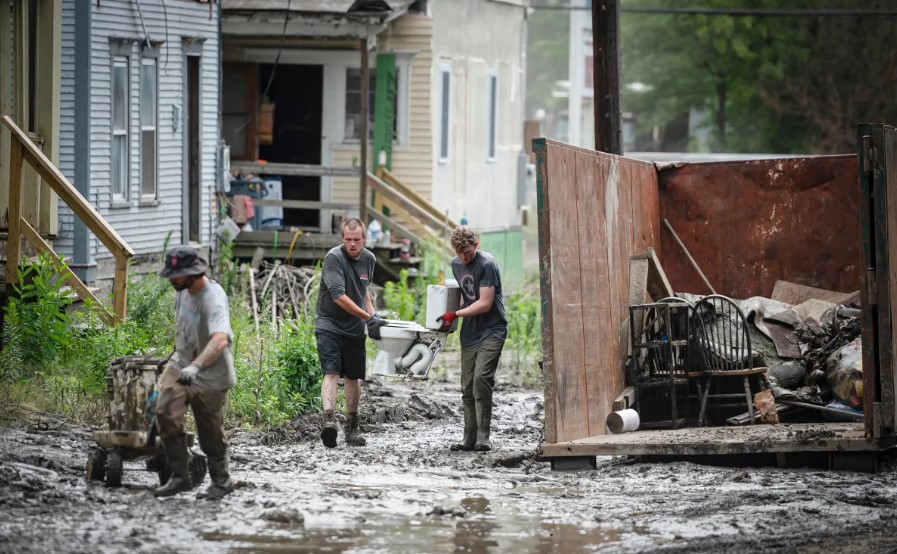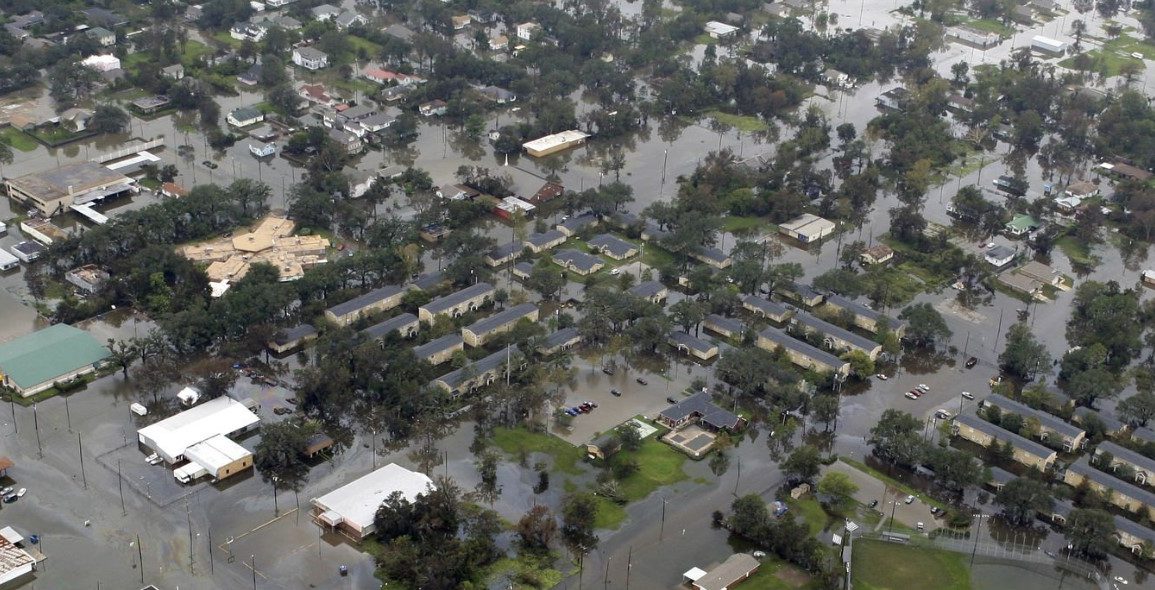Northeastern Vermont faced another round of catastrophic flooding on Tuesday, following a severe storm that unleashed torrential rain and thunderstorms.
The intense weather conditions, which began late Monday night, brought between 6 and 8 inches (15 to 20 cm) of rain, causing widespread damage and disruption across the region.
Lyndonville, located about 40 miles northeast of Montpelier, was particularly hard-hit. Residents like Deryck Colburn reported being awakened by neighbors and the frightening sound of rushing water from an overflowing brook.
Colburn described a scene of devastation where familiar roads had become rivers, and boulders were carried away by the floodwaters.
The flooding mirrored the severity of the damage from Hurricane Beryl’s aftermath earlier this month, though on a slightly smaller scale.

Vehicles were crushed and coated in mud, homes were displaced, and utility infrastructure was heavily damaged. Roads were destroyed in several locations, with roadbeds being carved away by the relentless water.
In St. Johnsbury, around 10 miles south of Lyndonville, a “shelter in place” advisory was issued as the storm’s impact became evident.
The area received significant rainfall, with reports of over 5 inches (12.7 cm) in some locations. The local population of about 6,000 was left stranded as roadways were blocked by debris and damaged infrastructure.
Emergency services were stretched thin as swift water rescue teams conducted approximately two dozen rescues in the dark. Mark Bosma, a spokesperson for the Vermont Emergency Management Agency, noted that the situation required immediate and extensive response efforts.
Residents took matters into their own hands in some cases. Jason Pilbin, who woke up to boulders rolling down his road, assisted neighbors in evacuating their homes and retrieving essential medications before their houses were destroyed.
The latest flooding has compounded Vermont’s challenges, following several significant flooding events in the past year due to a combination of climate change and the state’s mountainous terrain.
Peter Banacos of the weather service pointed out that increased rainfall has exacerbated the state’s flooding risks, while Julie Moore from the state agency of natural resources highlighted ongoing efforts to improve infrastructure resilience.
As Vermont grapples with the aftermath of this latest disaster, residents and officials alike face the daunting task of rebuilding and preparing for future climate-related challenges.

